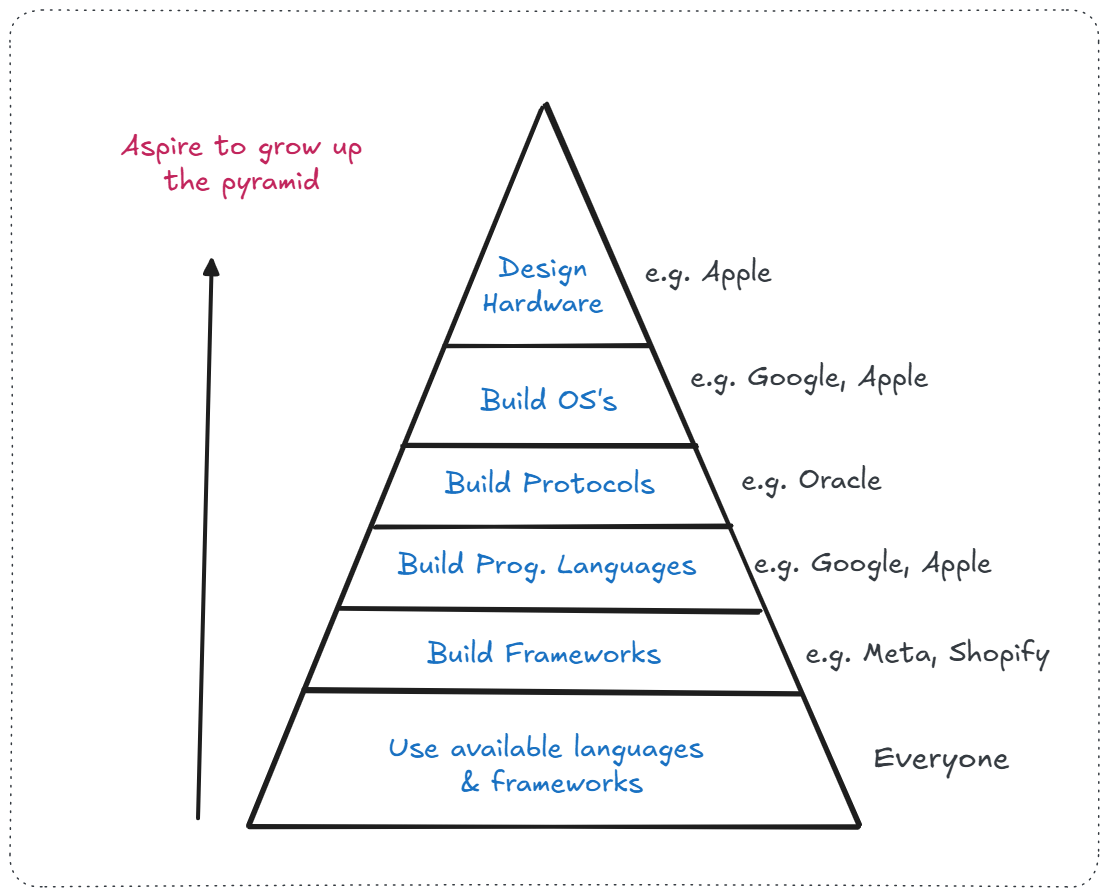Buy vs Build Decisions in Software Product Development
My team members often ask, “Why are we building this ourselves when there’s a library we could use?” Most developers who have worked with me know my strong dislike for external plugins and dependencies. It’s not that I believe in recreating everything from scratch, but as a software product company, we must aspire to be creators of frameworks, not just consumers of them. Overreliance on external tools turns your platform into a patchwork of borrowed pieces, leaving you at the mercy of others' updates, features, and security protocols.
The goal isn’t to build everything ourselves but to strategically focus on what matters most to our product’s core value. Knowing when to build and when to integrate with external tools is what separates companies that drive innovation from those that merely assemble tools. Let’s explore why building in-house often outweighs the convenience of external dependencies—and how to decide when it’s worth the trade-off.
The Case for Building Components In-House
When it comes to creating software, defaulting to external tools and libraries might seem like the fastest route, but it often leads to hidden costs that cripple your product in the long run. Building in-house might take longer upfront, but it offers unparalleled control, scalability, and simplicity. Here’s why:
- Eliminating Unnecessary Complexity External tools are often designed to appeal to a wide range of users, which means they’re packed with features you don’t need. These “bells and whistles” don’t just go unused—they bloat your code, slow down performance, and complicate debugging. By building only what your product truly requires, you create a leaner, more efficient system tailored to your needs.
- Control Over Updates and Releases When you rely on third-party tools, their updates are out of your hands. A sudden API change or version upgrade can break critical parts of your application, forcing you to react to someone else’s timeline. Building in-house means your platform evolves at your pace, not theirs.
- Security Concerns Every external dependency is a potential security vulnerability. A supply chain attack on one plugin could compromise your entire system. When you build your components, you can enforce your security protocols, reducing risks and ensuring your platform’s integrity.
By prioritizing in-house development, you maintain control over your product’s future, avoid unnecessary complexity, and safeguard your platform from external risks. But there are times when external tools make sense—let’s explore those next.
When It’s Acceptable to Use External Components
Not every component of your software needs to be built from the ground up. There are scenarios where leveraging external tools is not just acceptable—it’s the smart choice.
- Non-Critical Areas Focus your resources on what defines your product’s core value. If your core business function is X, it’s acceptable to use external tools for Y, provided Y is non-critical. For instance, if you’re building a platform that revolutionizes analytics, using a plugin for email notifications is a no-brainer. Conversely, outsourcing core functionalities, like data processing or visualization in this case, to external tools such as PowerBI undermines your product’s identity and scalability.
- MVPs and Rapid Prototyping Speed matters in the early stages of product development. For Minimum Viable Products (MVPs), external tools can help you get to market faster, validate your ideas, and save time on non-core elements. Using third-party libraries or plugins in this phase allows your team to focus on testing and iterating the core functionality without getting bogged down by details. However, be prepared to replace these shortcuts with in-house solutions as your product matures.
The Rule of Thumb: External tools are fine for peripheral or temporary needs but avoid embedding them into the DNA of your product. For core functions, in-house development ensures long-term ownership, scalability, and differentiation.
The Innovation Pyramid
To explore how you can approach the Build vs. Buy decision, I present to you The Innovation Pyramid—a model that highlights the progression toward technological independence. At each level, there’s an increasing degree of control, customization, and investment. The higher up you go, the closer you are to achieving full-stack ownership, but the costs—both in terms of resources and complexity—rise significantly.

Here’s the hierarchy:
- Base Level: Most Developers and Companies What They Do: Use existing programming languages, frameworks, and libraries (e.g., React, Python, Django).
- Framework Builders What They Do: Develop custom frameworks to better suit their platform’s specific requirements. Examples: Meta with React, Google with Angular.
- Language Creators What They Do: Design programming languages to address unique challenges in scalability, performance, or efficiency. Examples: Google’s Go, Apple’s Swift.
- Protocol Innovators What They Do: Define new communication protocols to optimize how systems interact. Examples: Google’s SPDY (precursor to HTTP/2), Meta’s QUIC.
- Operating System Developers What They Do: Build entire operating systems for their platforms to maximize hardware-software synergy. Examples: Microsoft with Windows, Google with Android.
- Hardware Designers What They Do: Design custom hardware to work seamlessly with their software. Examples: Apple with its A-series chips and custom hardware.
Why: These tools provide ready-made solutions for common problems, enabling teams to focus on application-specific logic.
Why: To achieve better performance, scalability, or developer experience tailored to their needs.
Why: To overcome limitations of existing languages and ensure optimal functionality for their ecosystems.
Why: To improve performance, security, or interoperability in ways existing protocols cannot.
Why: To have full control over system-level functionality and user experience.
Why: Achieve unmatched performance, efficiency, and user experience by tightly integrating hardware and software.
Conclusion
Most teams start by leveraging existing tools and frameworks to build quickly and efficiently, but true innovation comes from selectively taking ownership of critical components. As your platform matures, focusing on in-house solutions for core functionalities ensures better performance, security, and scalability while setting your product apart from the competition. The key is to prioritize what drives your unique value while minimizing reliance on external tools for areas that define your business.
Climbing this ladder of innovation is not about aiming for complete vertical integration unless it aligns with your vision, but about making deliberate choices that strengthen your platform’s foundation. By owning what matters most and leveraging external tools where it makes sense, your team can build a product that’s not only efficient and secure but also positioned for sustainable growth and differentiation.
Tags: Build vs Buy in Software Development, When to Build Software Components In-House, How to Choose Between Building or Buying Software, Software Development Best Practices, Reducing External Dependencies in Software, Build vs Buy Decision-Making Framework, Why Avoid External Plugins in Software, Custom Software Development Strategies, How to Build Scalable Software Products, Software Product Innovation Strategies, Balancing Build and Buy in Tech, Creating Frameworks vs Consuming Libraries, How to Reduce Third-Party Risks in Software Development, In-House Software Development Benefits, Build Software Frameworks for Long-Term Growth
